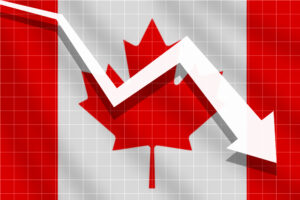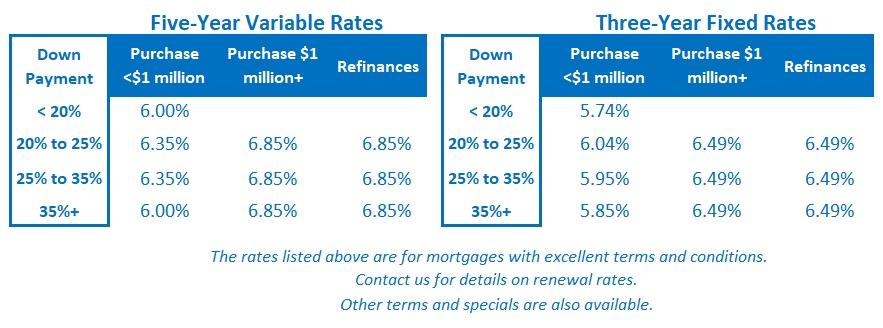More Good News for Canadian Fixed Mortgage Rates
November 20, 2023The Canadian Economy Is Topping Out. Mortgage Rates Are Too.
December 4, 2023
Last week Statistics Canada confirmed that our Consumer Price Index (CPI) fell from 3.8% in September to 3.1% in October on a year-over-year (YOY) basis, slightly below the consensus estimate of 3.2%.
The drop was primarily attributed to lower gasoline prices, which declined by 7.8% last month after rising by 7.5% in September YOY. (Our CPI was 3.6% YOY last month with gasoline prices excluded.)
Core inflation, which strips out volatile food and energy prices, fell from 2.8% YOY in September to 2.7% YOY in October, and the Bank of Canada’s (BoC) two most closely watched sub-measures of core inflation also declined. CPI-trim fell from 3.7% to 3.5%, and CPI-median fell from 3.9% to 3.6% YOY.
Service prices increased by 4.6% last month, up from 3.9% YOY in September. The largest contributors within that sector came from mortgage interest cost (+30.5% YOY), food (+5.4% YOY), and rent (+8.2% YOY).
Government of Canada (GoC) bond yields didn’t react as strongly as expected to our latest inflation data because they had already been pulled lower by the release of the latest US inflation data, which was similarly encouraging, the prior week.
The bond futures market is now pricing in the BoC’s first 0.25% rate cut in March 2024, and a total of three 0.25% cuts by next September. That repricing confirms at least a partial pivot away from the higher-for-longer interest-rate forecast that dominated bond markets over the summer.
Here are the factors that are underpinning that shift in sentiment:
- There is now consensus that the BoC’s policy rate has peaked. In his speech last week, BoC Governor Tiff Macklem noted that “there is more downward pressure on inflation … in the pipeline” and he assessed that rates may now be “restrictive enough” to sufficiently cool inflation.
- Our economy is showing clear signs of slowing. Stats Can will confirm our GDP growth rate for Q3 later this week, and it is expected is to be flat for the third consecutive quarter.
- Home sales are down, new listings are on the rise, and mortgage loan growth has slowed to its lowest level since 1983 (hat tip to Ben Rabidoux for that detail).
- Our unemployment rate increased from 5.5% to 5.7% last month, and new job creation slowed, portending slowing wage growth ahead.
- Our CPI is now only slightly above the BoC’s target band of 1% to 3% and is well within sight of the Bank’s 2% target.
In summary, there is now clear evidence that our economic momentum has slowed and that it is likely to slow further.
That won’t be good news overall, but the silver lining for anyone in the market for a mortgage is that rates are likely to fall as this slowdown plays out. (While past may not always be prologue, our mortgage rates have fallen during every recession in the modern era.)
With that in mind, if I were in the market for a mortgage today, I would be choosing between a three-year fixed rate and a five-year variable rate.
If you can tolerate variable-rate risk (both financially and psychologically) and if you are prepared to be patient, I think the odds are that variable rates will produce the lowest total borrowing cost over the next three to five years (especially if the bond market’s current expectations are realized).
On the other hand, if you’re conservative and you want to guard against the risk that inflation will prove stickier than the bond market now forecasts, I think three-year fixed rates are a good alternative. The premiums for one- and two-year fixed rates are still prohibitively high, and I don’t think it will take more than three years for fixed rates to decline materially. The Bottom Line: GoC bond yields held steady last week after their recent declines. If that trend continues, we should expect lenders to continue to drop their fixed mortgage rates (albeit more slowly than borrowers would like).
The Bottom Line: GoC bond yields held steady last week after their recent declines. If that trend continues, we should expect lenders to continue to drop their fixed mortgage rates (albeit more slowly than borrowers would like).
Five-year variable-rate discounts were unchanged last week.
Bond-market investors now believe that the BoC’s first rate cut is only about four months away and that additional cuts will follow not long after. That prospect is increasing the appeal of variable-rate options.







